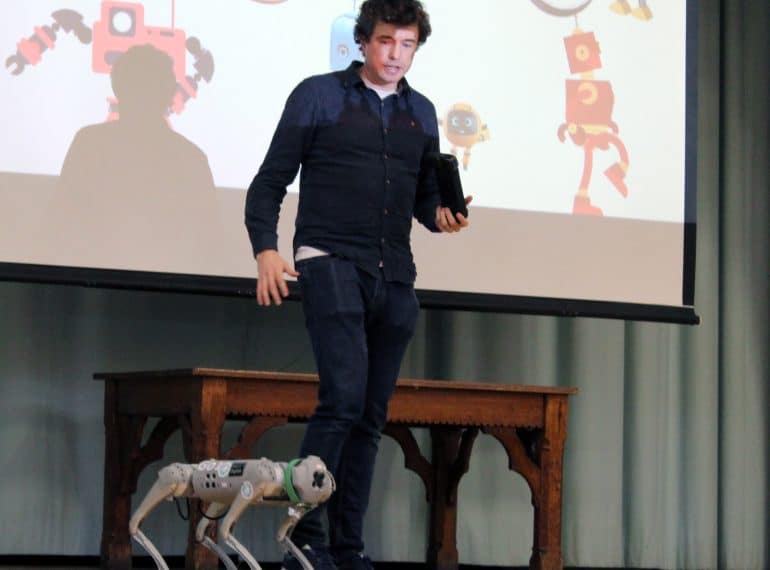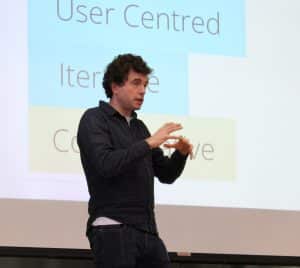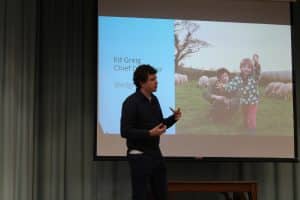
Deloitte innovation specialist Ed Greig demonstrated robots on his visit to QE – but told the boys to focus on the nature of any problem, not the technology involved in the solution.
 Mr Greig, who works for Deloitte Digital (part of the global Deloitte financial services and consultancy group) as its Chief Disruptor, made it through the snow to give a lunchtime lecture about his work, which involves working with new technologies to understand how they can benefit clients.
Mr Greig, who works for Deloitte Digital (part of the global Deloitte financial services and consultancy group) as its Chief Disruptor, made it through the snow to give a lunchtime lecture about his work, which involves working with new technologies to understand how they can benefit clients.
He told the boys: “The mantra of my team is to fall in love with the problem, not the solution.”
He stressed the importance of understanding the true nature of problems, suggesting that invariably they are really about cultural change rather than technology – even if technology might be involved in the solution.
 He gave the real-life example of a prosthetic arm for a six-year-old girl, where the issue was not merely the functionality of the limb, but making sure the girl would actually wear it by ensuring its design was fashionable and appealing, so that she would want to put it on.
He gave the real-life example of a prosthetic arm for a six-year-old girl, where the issue was not merely the functionality of the limb, but making sure the girl would actually wear it by ensuring its design was fashionable and appealing, so that she would want to put it on.
There were now so many more opportunities to create and replicate experiences than even ten years ago, he said.
He gave demonstrations of both AI-powered software robots and hardware robots: having brought along a robot dog, he made it climb the stairs leading to the stage in the hall in QE’s Main Building.
He also sent a robot around Deloitte’s offices looking for people to say ‘hello’ to members of his QE audience – a task complicated by the fact that, as a result of the snow, the offices were virtually empty!
Mr Greig, a Fellow of the Royal Society of Arts, read Politics, Philosophy and Economics at the University of Warwick. After running his own web design business, he joined Deloitte in 2009 as a Technology, Creative and User Experience Consultant in 2009.
In his current role, his work involves demonstrating the benefits of new technologies in a tangible way by building proofs-of-concept and minimum viable products.
